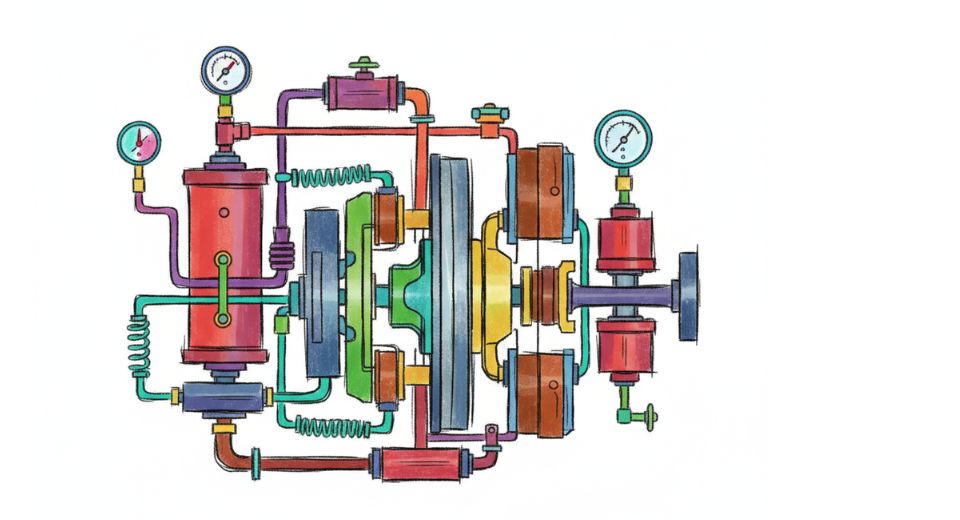
Sep 26, 2025

Metastat Insight, a well-known market intelligence authority, has published a comprehensive report entitled Global Train Brake System Market. The recently published report presents a comprehensive examination of the design, engineering, and functional architectures that regulate braking solutions applied in contemporary rail infrastructure.
The report is notable for emphasizing high-level mechanisms, control systems, and integration approaches that enable trains to respond with consistent stopping performance under an extensive range of operational situations.
The study delves into the ways in which the international train brake system industry has evolved through gradual improvement of parts and technologies to address the needs of high-speed passenger trains, freight trains, and city transit systems.
It traces a detailed history of the evolution from traditional air braking systems to electronically controlled and software-assisted systems that can coordinate braking among multiple cars all at once. The research captures how such systems assist with safety, scheduling accuracy, and operational effectiveness in interlinked rail networks.
Metastat Insight coverage addresses technical observations on the most important elements determining brake system architecture. Disc brakes and drum brakes, control valves, compressors, and actuators are assessed for their contribution to guaranteeing consistent behavior.
Emphasis is laid on integration with on-board monitoring systems measuring wear levels, temperature, and responsiveness in real time, enabling the maintenance team to take pre-emptive actions and avoid unplanned downtime.
The work gives significant attention to the increasing relevance of automation and digital control. Electronically controlled pneumatic (ECP) technology is mentioned as part of a wider shift toward more intelligent braking systems that can coordinate performance across a whole train set.
The global train brake system market is presented as a setting in which hardware accuracy and software cleverness meet to provide highly integrated braking responses that reduce stopping distance and wear.
Regional breakdown in the report shows differences in system adoption by rail infrastructure, regulatory needs, and network concentration. Some regions are driven by the quick development of metro and light rail networks, calling for tight, energy-conserving braking systems.
Others require heavy freight capability and call for robust systems with good thermal resistance and low maintenance cycles. Regional focus provides manufacturers and vendors a clear picture of localized needs.
Metastat Insight study also delves into the aftermarket sector, in which inspection services, refurbishment schemes, and component upgrades constitute a significant aspect of the business environment.
The report identifies how refurbishment centers and dedicated workshops play a role in system lifespan extension, lowering lifecycle expenditure for operators, and compliance with revised safety standards.
A detailed overview of system testing and certification processes is incorporated. Brake performance has to adhere to severe international and regional requirements, and the report discusses laboratory simulation, track testing, and emergency stop tests as some of the processes in verification. These processes highlight the primacy of reliability in brake system deployment.
Competitive profiling is a central part of the publication. Top manufacturers and technology providers are ranked according to product portfolios, production footprint, and alliances with rail operators and infrastructure developers.
Strategic initiatives like joint ventures, technology licensing agreements, and investments in R&D facilities are used as methods that companies preserve their technological advantage and increase market penetration.
The report discusses supply chain resilience and emphasizes how production planning and sourcing strategies enable uninterrupted delivery to maintenance depots and train manufacturers. Effective coordination of logistics ensures that systems and spare parts are on hand when needed, enabling smooth project execution for new rolling stock as well as overhaul programs for old fleets.
Environmental issues are given considerable emphasis, with reporting of the return of energy through regenerative braking systems into the grid and minimized total power consumption. Noise reduction, low-emission materials, and sophisticated friction management technologies are added to the push for environmentally friendly rail transport.
The report also focuses on the training and simulation facilities offered to operators and maintenance personnel. Interactive training modules, virtual reality solutions, and remote diagnostic platforms are referred to for enhancing response time and operational safety. These factors showcase how the international train brake system market is not just confined to equipment supply but moves into knowledge transfer and skill development.
In summary, the international train brake system market, as outlined by Metastat Insight, is a highly engineered and strategically controlled sector within the railway business. The report provides an authoritative view of system design, integration methodologies, testing procedures, and competitive forces molding this critical rail transport component.
Through giving in-depth perspectives on technology development, regional differences, and operating models, Metastat Insight empowers stakeholders with the knowledge needed to participate actively in a market that supports the safety and efficiency of rail networks globally.
Drop us an email at:
Call us on:
+1 5186502376
+91 73850 57479